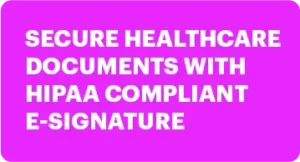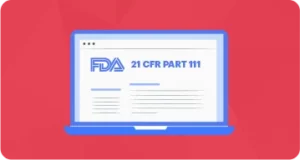Unlock HIPAA Compliance: The Complete Guide
Introduction to HIPAA Compliance
The Health Insurance Portability and Accountability Act (HIPAA) is a standard which all healthcare providers, organizations, and insurance companies must follow. Its primary focus is to keep customers’ Protected Health Information (PHI) secure and confidential. HIPAA compliance is an important part of any business that handles PHI.
This guide will provide an overview of the history of HIPAA compliance regulations and what is covered by the HIPAA Privacy Rule and the HIPAA Security Rule. It will also discuss how to form a HIPAA compliance policy, tips for strengthening security measures, and guidance on business associate agreements. Lastly, it will cover the common HIPAA violations and penalties, as well as providing you with some helpful FAQs and official resources.
History and Timeline of HIPAA Compliance Regulations
The Health Insurance Portability and Accountability Act (HIPAA) was signed into law in 1996. It was created with the purpose of setting regulations to protect confidential health information and ensure it is used correctly and securely.
The legislation has gone through several revisions and updates since then, with new regulations being added in 2003, 2009, 2013 and 2016. The most important parts of the HIPAA legislation are the Privacy Rule and Security Rule.
The Privacy Rule outlines the steps medical professionals must take to protect patient privacy and regulate the use of Protected Health Information (PHI). The Security Rule was introduced in 2006 and protects electronic health data from unauthorized access.
In 2013, the HITECH Act was passed as an amendment to HIPAA. This made it mandatory for HIPAA compliance to be implemented in all organisations that handle patient data. This includes hospitals, doctor’s offices, insurance companies, and any other type of organization dealing with patient health information.
What is Covered Under the HIPAA Privacy Rule?
The HIPAA Privacy Rule is designed to keep medical records and other individually identifiable health information about patients safe and secure. It provides a set of standards that organizations must abide by in order to protect patient privacy. The rule applies to healthcare providers, health plans, and health clearinghouses (business associates) that use or store “protected health information” (PHI).
The Privacy Rule gives patients the right to control who has access to their medical records and how it is used. It requires organizations to verify patient identity before allowing access to PHI and to limit who can view, use, or share records. Organizations must also have written policies and procedures in place that describe how they will handle PHI and the risks associated with its use.
The Privacy Rule also sets out several rights for patients. These include the right to obtain copies of their health records, the right to request corrections to those records, and the right to file a complaint if they feel there has been a violation of their rights under HIPAA.
What is Covered Under the HIPAA Security Rule?
The Health Insurance Portability and Accountability Act (HIPAA) Security Rule is a federal regulation of standards that must be met by healthcare providers, health insurance plans, and other organizations and individuals who may use or store protected health information (PHI). The HIPAA Security Rule establishes specific requirements for maintaining the confidentiality, integrity, and availability of personal health information.
These requirements include developing and implementing administrative safeguards, physical safeguards, and technical safeguards to protect PHI that is electronically stored, transferred, or otherwise handled. Examples of such safeguards include:
- Developing policies and procedures that define how to handle PHI
- Using encryption to protect PHI when it is sent electronically
- Implementing measures to detect and respond to security threats
- Limiting use of PIDs and limiting access to PHI
- Conducting regular risk assessment examinations
The HIPAA Security Rule also includes requirements related to breach notifications and auditing access to PHI. Organizations must adhere to these requirements in order to remain HIPAA compliant.
How to Form a HIPAA Compliance Policy
Creating a HIPAA compliance policy is essential for businesses that work with protected health information (PHI). A HIPAA compliance policy is a document that outlines how a business will comply with the regulations set out in the Health Insurance Portability and Accountability Act (HIPAA).
The HIPAA Privacy Rule and Security Rule provide a framework for securing patient data. As such, the policy should address how the business protects digital data, physical data, training, incident response, and more.
While it’s not required to have a written policy, it serves as a resource that outlines expectations, processes, and procedures for keeping PHI secure. Having a written policy makes it easier to ensure all staff members are properly trained on HIPAA compliance. Here is an overview of what should be included in the policy:
- Overview of the HIPAA Privacy and Security Rules
- Description of the data that will be protected and its purpose
- Processes for handling and sharing PHI
- Requirements for authentication and authorization when accessing PHI
- Rules for transmitting and storing PHI
- Training expectations for staff
- Incident response protocols
- Ongoing security measures
- Disciplinary actions for violations
- Terms for using third-party services to store PHI
- Auditing plans and regular updates
Creating a strong HIPAA compliance policy is a crucial step in maintaining the security and privacy of PHI. It is important to be thorough and regularly review the policy to make sure it is up to date with the latest security standards.
Strengthening security measures is an important part of creating effective HIPAA compliance policies. To get started, there are various steps to take to ensure your organization is adequately protecting patient health information (PHI).
Here are some tips to help strengthen security measures:
- Establish physical safeguards to regulate access to data systems, such as using locks, guards, and visitor sign-in logs.
- Limit access to patient health information to only those who need it to do their job.
- Offer staff and leaders training on HIPAA regulations, privacy, and security protocols.
- Ensure all software and hardware used to store patient information has up-to-date security patches installed.
- Monitor access to PHI and investigate any unauthorized access.
- Implement a mobile security policy to address the use of personal devices that can access PHI.
- Develop an incident response plan in case a breach occurs.
These measures will go a long way towards helping you maintain and adhere to HIPAA rules. With the right policies and procedures in place, you can ensure that your organization is secure and compliant.
Protecting medical records and personal health information (PHI) is an essential part of HIPAA compliance. As there are significant risks associated with the mishandling of PHI, you must take precautions to ensure that your data is secure. There are several steps you can take to ensure the safety of your patients’ information:
- Establish access control protocols that limit which individuals can access PHI.
- Encrypt electronic health records (EHRs).
- Ensure that all employees handling PHI follow best practices and understand the importance of security procedural protocols.
- Limit physical access to areas where PHI is stored.
- Enforce strict password policies and authentication measures for any user accessing PHI.
- Regularly audit your security system to identify possible vulnerabilities.
- Implement and review comprehensive security policies and procedures.
- Train staff members on how to identify and respond to potential security breaches.
It is important to note that even if you take all the necessary steps to protect PHI, you may still be subject to legal action resulting from a breach. Therefore, it is always important to remain vigilant and continue to assess the security of your systems.
Guidance on Business Associate Agreements
A business associate agreement (BAA) are designed to protect the privacy and security of patient health information (PHI). This agreement is a contract between two parties- a HIPAA-covered entity (CE) and their business associate (BA).
The purpose of a BAA is to ensure that any PHI shared between the CE and BA is used only for the specific purpose outlined in the agreement, and is kept secure. It also outlines each party’s responsibilities to maintain HIPAA compliance.
Under the Privacy Rule, CEs must have a signed written BAA with any BA they use that has access to PHI. A BA can be any person or company who creates, collects, transmits, or stores PHI on behalf of a CE, such as a third-party billing service or data storage vendor.
The BAA must include the following provisions:
- Purpose and permitted uses of PHI
- Security measures the BA must use to protect PHI
- Obligation of the BA to provide timely notification to the CE if there is a data breach
- Return or destruction of PHI when the BAA ends
It is crucial for CEs to have a thorough understanding of how a BA may use PHI and have the proper checks and balances in place to ensure that any PHI shared is kept safe.
HIPAA violations are serious and can result in heavy fines – up to $1.5 million for any single violation or more depending on the severity. It is important that healthcare organizations and their business associates understand and comply with the HIPAA rules and regulations.
When a breach or violation of these rules occurs, the Office for Civil Rights (OCR) – which is responsible for enforcing HIPAA compliance – may investigate the organization for penalties. The types of violations and fines vary depending on the nature of the offense and potential damages resulting from the breach.
Below is a list of common HIPAA violations and penalties for non-compliance:
- Failure to adhere to the HIPAA Privacy Rule: Up to $50,000 per violation.
- Unauthorized disclosure of PHI without written authorization: Up to $50,000 per violation.
- Failure to implement safeguards to protect PHI: Up to $50,000 per violation.
- Failure to provide access to individuals’ PHI when requested: Up to $1.5 million per violation.
- Violation of HIPAA Security Rule requirements: Up to $1.5 million per violation.
Frequently Asked Questions (FAQs) on HIPAA Compliance
HIPAA compliance is critical for any person or organization that handles protected health information (PHI). It can seem overwhelming, so here are some frequently asked questions about the process of complying with HIPAA regulations.
- What is HIPAA?
- What is covered under the HIPAA Privacy Rule?
- What is covered under the HIPAA Security Rule?
- What is involved in developing a HIPAA compliance policy?
- What tips can I use to strengthen security measures?
- How do I protect medical records and PHI?
- What are the requirements for business associate agreements?
- What are common HIPAA violations and penalties?
- Where can I find official HIPAA information resources?
Link to Official HIPAA Information Resources
The HIPAA law provides guidance and resources that healthcare providers, their business associates, and other interested parties can use to understand how to comply. The U.S. Department of Health & Human Services (HHS) website offers a wealth of official information on HIPAA compliance.
HHS is the regulatory authority that enforces HIPAA rules. HHS publishes numerous guidance documents and fact sheets that clarify various aspects of HIPAA rules. It also publishes official interpretations of the HIPAA Privacy Rule and Security Rule. These official interpretations provide additional information on each rule.
HHS also offers HIPAA-related training materials, such as webinars and simulations. These educational materials are beneficial for anyone looking to gain a further understanding of HIPAA rules.
Finally, HHS offers an online search tool where you can look up enforcement cases and compare them to your own situation. By looking at previous enforcement cases, you can get an idea of how the HHS Office for Civil Rights will interpret violations of the HIPAA rules.
The Ultimate Guide to HIPAA Compliance is designed to offer an accessible overview of the regulations set by HIPAA and how to comply with them. In this guide, we’ll cover everything from the history and timeline of HIPAA compliance regulations to protecting medical records and PHI. We’ll discuss the Privacy Rule and Security Rule, as well as tips for strengthening security measures and business associate agreements. Common HIPAA violations and penalties will also be discussed. We conclude with a FAQs section which covers the often-asked questions about HIPAA compliance and provides links to official resources.
By the end of this guide, readers should have a comprehensive understanding of HIPAA compliance and the steps they can take to protect their business or organization. With this knowledge, you should be able to confidently ensure your organization is fully compliant and prepared for any future changes in legislation.
FAQs Regarding the Ultimate Guide to HIPAA Compliance
1. What is HIPAA?
The Health Insurance Portability and Accountability Act (HIPAA) is a U.S. federal law that was enacted in 1996. It provides data security and privacy protections for safeguarding patient health information (PHI).
2. What timeline of regulations does HIPAA compliance follow?
HIPAA was originally enacted in 1996 with the Privacy Rule, followed by the Security Rule in 2003, the requirement for Business Associate Agreements with applicable entities in 2013, and the Omnibus Rule in 2013.
3. What is covered by the HIPAA Privacy Rule?
The HIPAA Privacy Rule sets national standards around the use, storage, and disclosure of PHI. It requires patient access to and control over their own health information, while also providing standardization in how healthcare providers use and store PHI.
4. What is covered by the HIPAA Security Rule?
The HIPAA Security Rule sets standards for a variety of administrative, physical, and technical safeguards that must be taken to protect PHI. This includes access control, audit trail monitoring, encryption, and other measures.
5. How do I form a HIPAA compliance policy?
A HIPAA compliance policy should include a framework for identifying risks and threats to patient health information, as well as procedures for mitigating those risks and ensuring secure access to PHI. It should also include regular risk assessments and security updates.
6. What are common HIPAA violations and penalties?
Common HIPAA violations include improper use or disclosure of PHI, failure to provide individuals with access to their health records, and inadequate safeguards for protecting PHI from unauthorized access. Penalties for these violations vary, and can include fines or even exclusion from participation in Medicare and Medicaid programs.
7. Where can I find more information about HIPAA?
The official website for HIPAA information and regulations is www.hhs.gov/hipaa. Additionally, this Ultimate Guide to HIPAA Compliance provides detailed information and guidance to ensure your business meets the necessary requirements.





